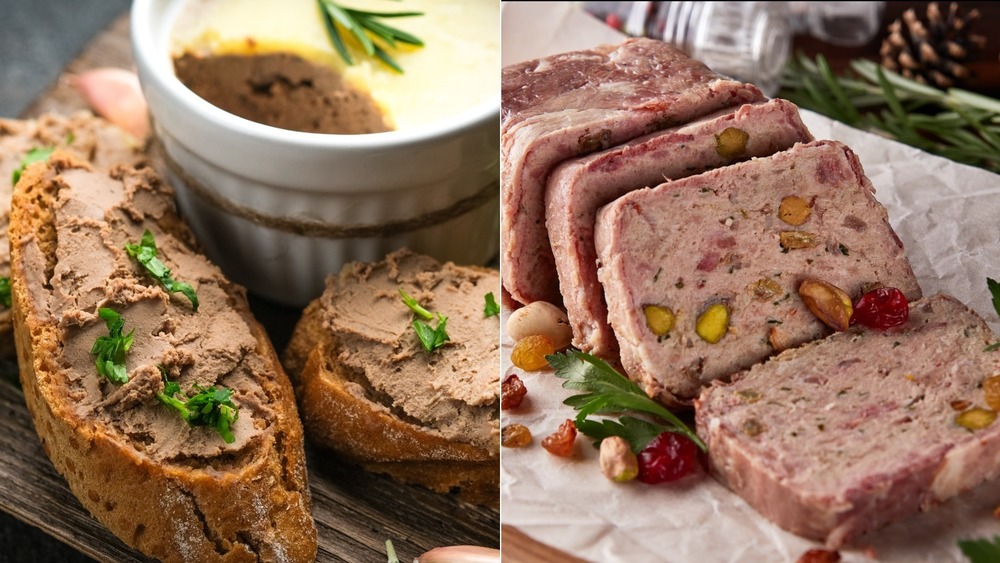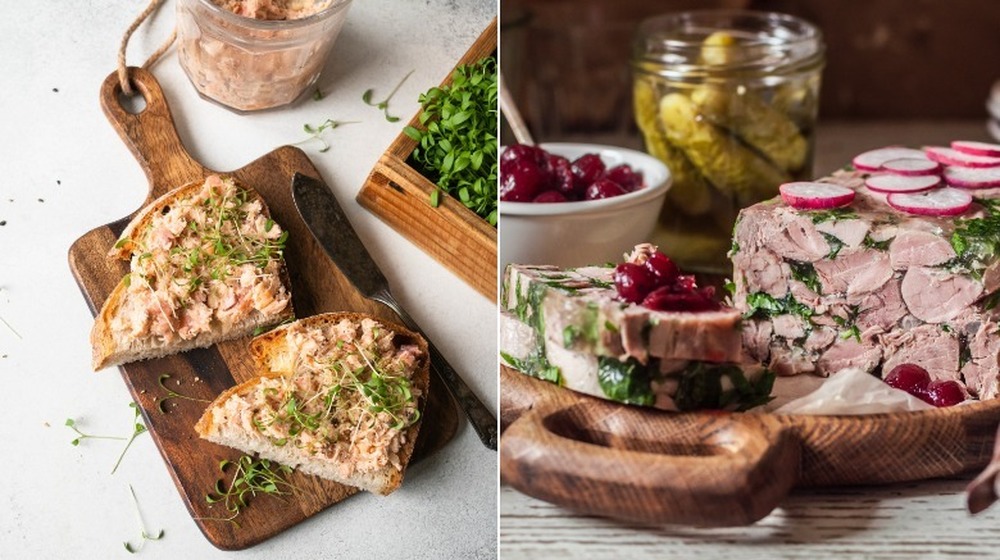This Is The Real Difference Between Pâté And A Terrine
Charcuterie has been around for quite some time, according to Serious Eats. The term, that originated in France around the 15th century, is a direct translation for the words flesh (chair) and cooked (cuit). Charcuterie was coined as a way to name meat shops that specifically sold special pork and animal organs, Serious Eats cites. From then on, things like pâté, terrines, mousse (ones made of meat), rillettes, and boudins became the norm for what was expected every time this meaty vessel was served. For the most part, many of the aforementioned prepared meats look quite different with the exception of pâtés and terrines. Food Republic asserts that the line between the two is so thin, that it is normal for many to confuse them. Both have similar ways of being made, which further blur the line between the two. But, much like mezcal and tequila, not all terrines are pâtés while pâtés can be terrines (confusing, right?).
The cooking process is where the clear departure lies
To make a deliciously smooth pâté, you'll need some organ meat and herbs (those are the two constants in the recipe, according to Food Republic). Depending on how you want it to hold up, you can add your choice of milk, egg, or bread. Now terrines, according to Food Republic, are made with ground meat, organ meat, seafood, vegetables, boiled eggs, and herbs. The Cookful explains that basically pâtés and terrines are a fancy French way of making a sorta upscaled meatloaf as both are meat combos that are then baked to perfection. Now, the main difference between the two and the reason that not all terrines are pâtés comes down to how terrines are cooked. Rather the baking vessel they are baked in. The Cookful explains that terrines are called terrines largely in part due to the fact that the loaf pan they are cooked in is called a terrine. Yes, it is really that small of a defining difference. Pâtés, on other hand, can be cooked in whatever cooking vessel your heart chooses.

